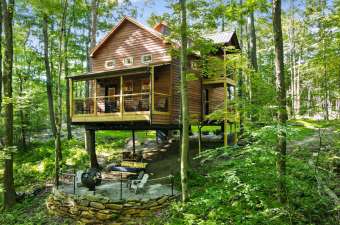PA HERITAGE AREAS GENERATE HUNDREDS OF MILLIONS OF
DOLLARS IN ECONOMIC BENEFITS, SUPPORT THOUSANDS OF JOBS
Harrisburg, PA - A new study released today shows that Pennsylvania’s 12 state-designated Heritage Areas generate hundreds of millions of dollars in economic benefits and support thousands of jobs in addition to building awareness of the state’s history and culture.
The study found that in 2014, tourists spent an estimated 7.5 million days/nights in Pennsylvania’s Heritage Areas, purchasing $2 billion worth of goods and services. This spending supported 25,708 jobs and generated $798 million in labor income and nearly $1.3 billion in value-added effects.
In addition, 70 percent of visitor spending and associated economic effects would be lost to these areas if heritage anchor attractions were not available, according to the study.
“By investing in our Heritage Areas, we are investing in our economy, supporting jobs and preserving our history and culture for future generations,” said Jane Sheffield, president of HeritagePA. “If we let funding for these historic and culturally significant areas run out, we risk losing them – and the economic benefits they bring – forever.”
The Heritage Areas rely on state funding through the Heritage Areas Program to administer programs and oversee projects. As the 2015-2016 budget impasse continues in Harrisburg, funding for the Heritage Areas remains at an all-time low, and an increasing number of services and projects are in danger of being cut.
Without an immediate infusion of funds, a number of Heritage Areas will begin making cuts by the end of March 2016.
Heritage Areas are geographic regions or corridors that span two or more counties that
contain historic, recreational, natural and scenic resources that collectively exemplify the heritage of Pennsylvania.
Pennsylvania’s 12 Heritage Areas are: Allegheny Ridge Heritage Area, Delaware & Lehigh National Heritage Corridor, Endless Mountains Heritage Region, Lackawanna Heritage Valley, Lincoln Highway Heritage Corridor, Lumber Heritage Region, National Road Heritage Corridor, Oil Region National Heritage Area, PA Route 6 Heritage Corridor, Rivers of Steel National Heritage Area, Schuylkill River National & State Heritage Area, and Susquehanna Gateway Heritage Area.
“Pennsylvania has one of the richest collections of heritage attractions in the nation, and this study helped confirm that these attractions not only showcase our commonwealth’s history, heritage and culture, but also generate real dollars and jobs for our commonwealth,” said Barry Denk, director of the Center for Rural Pennsylvania. “These heritage areas contribute to a quality of life and sense of place that truly set the Keystone State apart.”
The “Economic Impact of Pennsylvania Heritage Areas” study was co-sponsored by The Center for Rural Pennsylvania and HeritagePA. The research team was led by John M. McGrath, Ph.D., a member of the business faculty at University of Pittsburgh-Johnstown.
About the Heritage Areas Program
Pennsylvania’s Heritage Areas Program is a well-established, national model operating in 57 counties across the Commonwealth. Pennsylvania’s Heritage Areas encompass almost every major historical site, population center, and tourist attraction the Commonwealth has to offer.
Established in 1989, the Heritage Areas Program is a comprehensive, multi-faceted regional strategic initiative to conserve and enhance key resources and promote a region’s heritage for tourism development. The 12 Heritage Areas are managed separately and are as unique as the history, resources, and the communities they work to preserve, enhance, and grow. Through partnerships (regional, businesses, communities, etc.) and grass-roots planning, historic, cultural, natural, scenic, and recreation resources are preserved and developed to strengthen regional economies with a goal of increasing tourism, creating new jobs, and developing investment opportunities.








